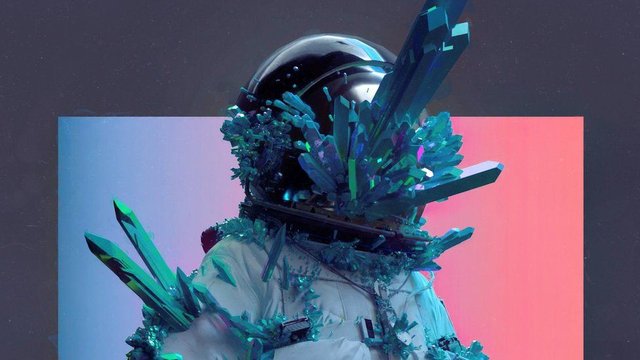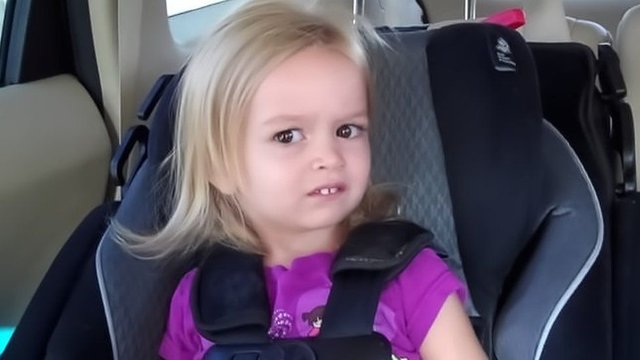"Side-eying Chloe" Clem - a miss who became a web sensation once an image of her wanting unaffected went infectious agent - is commercialism the first image for thousands of greenbacks at auction.
It' being offered as a "non-fungible token" (NFT), some way of owning the original digital image.
wherever Bitcoin was hailed because the digital answer to currency, NFTs are currently being touted as the digital answer to collectables, however lots of sceptics concern they're a bubble waiting to burst.
what's a non-fungible token?
In economics, a fungible asset are some things with units that may be promptly interchanged - like money.
With money, you'll swap a £10 note for 2 £5 notes and it'll have constant value.
However, if one thing is non-fungible, this can be not possible - it suggests that it's distinctive properties therefore it can't be interchanged with something else.
It might be a house, or a painting reminiscent of the Anglesea Lisa, that is one in every of a kind. you'll be able to take a photograph of the painting or purchase a print however there'll solely ever be one original painting.
NFTs are "one-of-a-kind" assets within the digital world that may be bought and sold like every different piece of property, but which don't have any tangible style of their own.
The digital tokens can be thought of as certificates of possession for virtual or physical assets.
however do NFTs work?
ancient works of art reminiscent of paintings are valuable exactly as a result of they're one in every of a kind.
however digital files are often simply and endlessly duplicated.
With NFTs, design can be "tokenised" to make a digital certificate of possession that may be bought and sold.
As with crypto-currency, a record of who owns what's keep on a shared ledger referred to as the blockchain.
The records can't be solid as a result of the ledger is maintained by thousands of computers round the world.
NFTs also can contain sensible contracts which will provide the artist, for example, a cut of any future sale of the token.
what proportion are NFTs worth?
In theory, anybody can tokenise their work to sell as an NFT however interest has been fuelled by recent headlines of multi-million-dollar sales.
On 19 February, an animated Gif of Nyan Cat - a 2011 culture of a flying pop-tart cat - sold-out for over $500,000 (£365,000).
a number of weeks later, musician Grimes sold a number of her digital art for more than $6m.
it's not simply art that's tokenised and sold. Twitter' founder Jack Dorsey has promoted an NFT of the first-ever tweet, with bids striking $2.5m.
Christie' sale of Associate in Nursing NFT by digital creative person Beeple for $69m (£50m) set a brand new record for digital art.
French firm Sorare, that sells soccer mercantilism cards within the sort of NFTs, has raised $680m (£498m).
however like crypto-currencies, there are issues regarding the environmental impact of maintaining the blockchain.
'Side-eyeing Chloe' Clem to sell picture culture as NFT
What' stopping folks repeating the digital art?
Nothing. innumerable people have seen Beeple' art that sold for $69m and also the image has been traced and shared countless times.
In several cases, the creative person even retains the copyright possession of their work, so that they will still turn out and sell copies.
however the customer of the NFT owns a "token" that proves they own the "original" work.
Some folks compare it to purchasing an signed print.
is that this a bubble?
every day before his best auction, Beeple - whose real name is electro-acoustic transducer Winkelmann - told the BBC: "I truly do suppose there'll be a bubble, to be quite honest.
"And I think we have a tendency to may well be therein bubble right now."
several are even additional sceptical.
David Gerard, author of Attack of the 50-foot Blockchain, aforesaid he saw NFTs as shopping for "official collectables", kind of like mercantilism cards.
"There are some artists completely creating bank on this stuff... it' simply that you simply most likely won't," he warned.
The folks truly merchandising the NFTs are "crypto-grifters", he said.
"The same guys who've invariably been at it, making an attempt to come back up with a brand new sort of tinpot magic bean that they can sell for money."
Former Christie' auctioneer Charles Allsopp aforesaid the construct of shopping for NFTs created "no sense".
"The idea of buying one thing that isn't there's simply strange," he told the BBC.
"I suppose people that invest in it are slight mugs, however I hope they don't lose their money."

